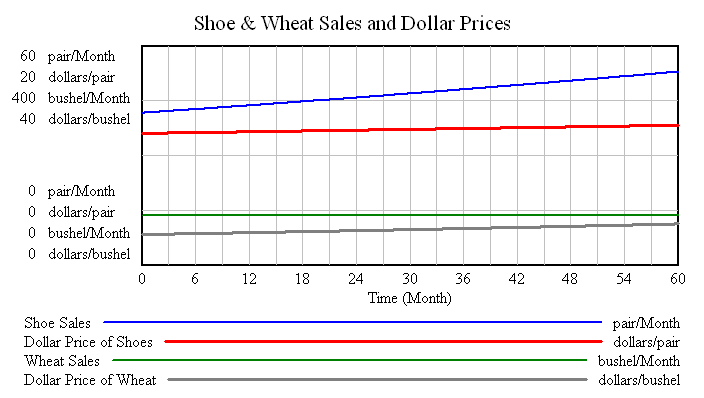The Free Market Center
The Free Market Center
| Shoe Productivity Increases | 2.00%/Month |
| Wheat Productivity Fixed | 0.00%/Month |
| Money Supply Increases | 0.50%/Month |
In this scenario shoe productivity increases (as in all scenarios) while the money supply increases by 0.5% per month (or 6% per annum).

After only two scenarios (fixed money supply and inflation) we begin to see the disruptive effects money growth has on dollar price signals.
© 2010—2020 The Free Market Center & James B. Berger. All rights reserved.
To contact Jim Berger, e-mail:
Because shoe productivity increases, shoe sales increase, as you would expect. Shoe dollar prices, however, rise when, based on production, you would expect them to decline. (Remember the fixed money supply scenario.) This gives evidence of the countervailing influence of the growth of money on dollar prices .
Dollar prices for wheat also give confusing signals. They rise while production remains flat.